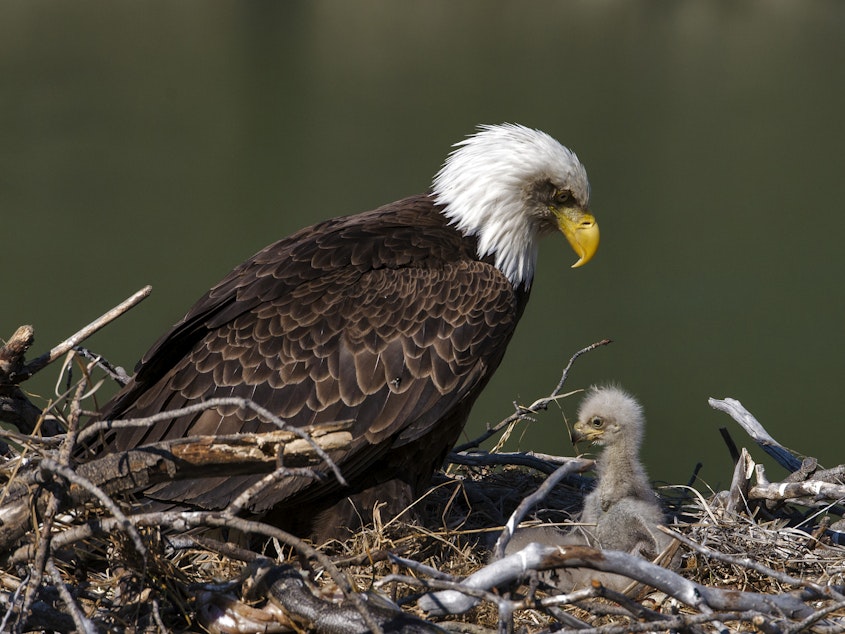Once Imperiled, America's Bald Eagle Populations Are Soaring

The number of bald eagles in the lower 48 U.S. states — a population once on the brink of extinction — has quadrupled in the last dozen years to more than 316,000, federal wildlife officials say, despite steep declines in other American bird populations.
A new survey by the U.S. Fish and Wildlife Service found there are more than 70,000 breeding pairs of the iconic raptor in the contiguous U.S. In the late 1960s, there were fewer than 500.
The turnaround is a "historic conservation success story," said newly confirmed Interior Secretary Deb Haaland at a news conference Wednesday.
"The bald eagle has always been considered a sacred species to American Indian people, and similarly it's sacred to our nation as America's national symbol," said Haaland, a member of New Mexico's Laguna Pueblo and the first Native American Cabinet secretary.
The success story, wildlife officials said, is a dramatic reminder of the power of conservation efforts. Bald eagles were hunted, poisoned and extirpated from their habitat across the contiguous U.S. for more than a century. Contamination from DDT, a powerful insecticide that found its way into eagles' prey, made their eggs so fragile that they often broke while their parents incubated them.
Sponsored
The discovery of DDT's disastrous effects on wildlife led to its ban in 1972. A year later, the Endangered Species Act was signed into law and bald eagles were included on the list, providing the iconic raptor with strong federal protections.
Bald eagle populations have gradually recovered since that listing and were removed from the endangered species list in 2007. The new survey found that since 2009, the last time a count was taken, bald eagle populations have quadrupled.
The success of bald eagles is a bit of an aberration though. A recent study from the Cornell Lab of Ornithology found that American bird populations have dropped by about one-third in the last 50 years.
A report by the National Audubon Society found that two-thirds of North America's bird species are at increasing risk of extinction due to a warming climate.
"By stabilizing carbon emissions and holding warming to 1.5 degrees Celsius above pre-industrial levels, nearly 150 species would no longer be vulnerable to extinction from climate change," the report said. [Copyright 2021 NPR]



